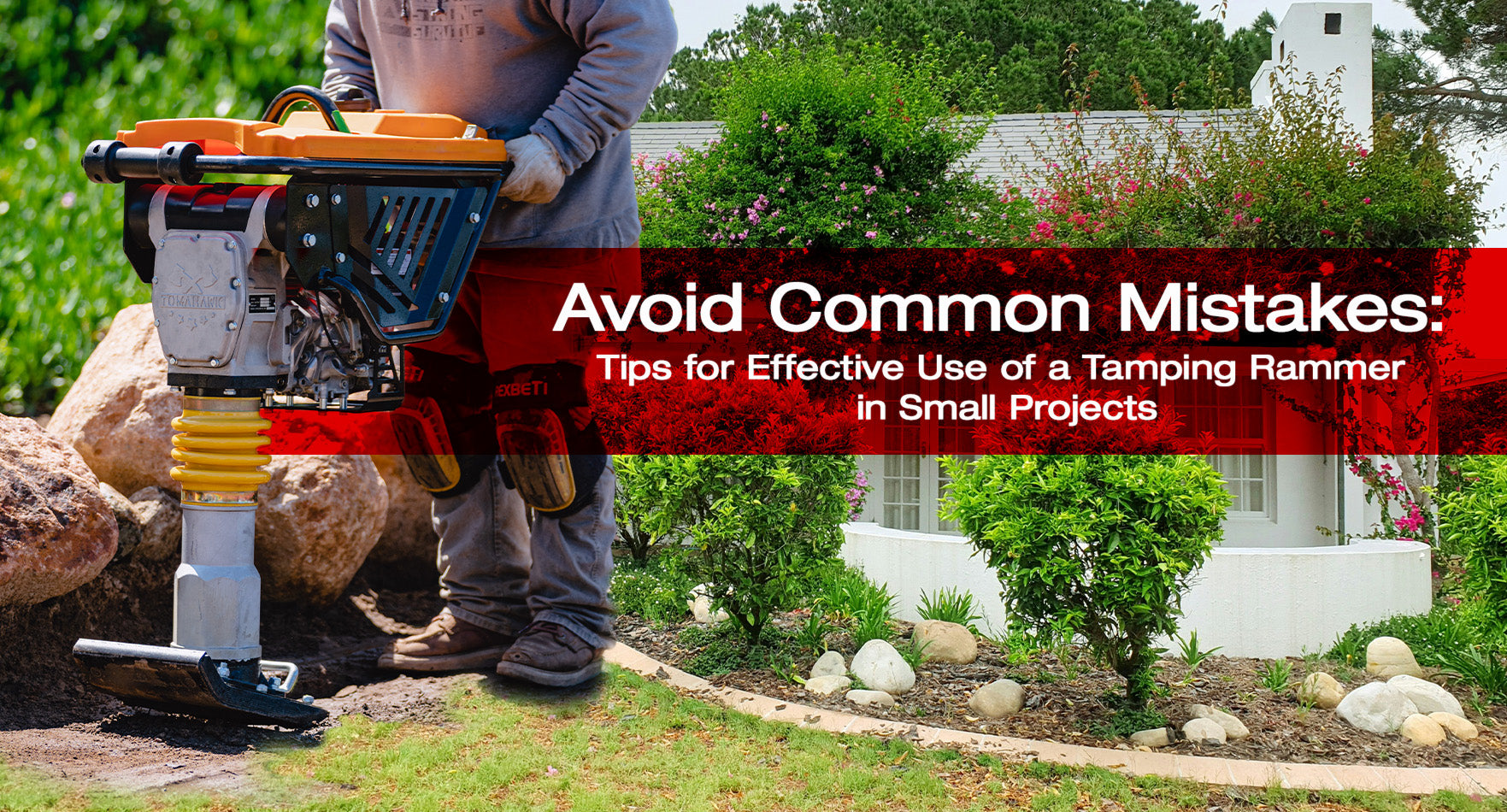Tamping rammers, also known as jumping jacks or vibratory plate compactors, are invaluable tools for compacting soil and achieving a sturdy, stable foundation in construction and landscaping projects. While these powerful machines are often associated with large-scale construction sites, they can also be incredibly useful for smaller projects around the home. However, using a tamping rammer effectively requires proper technique and attention to detail. In this blog, we'll explore some tips to help homeowners make the most of their tamping rammer for small-scale projects while avoiding common pitfalls.
1. Choose the Right Size: Before diving into your project, it's essential to select the appropriate size tamping rammer for the job. For smaller projects like landscaping, pathway installation, or compacting trenches, a lightweight or medium-sized rammer is typically sufficient. Larger rammers are better suited for heavy-duty construction and roadwork. Choosing the right size ensures optimal performance and efficiency.
2. Prepare the Area: Proper preparation is key to achieving effective compaction with a tamping rammer. Start by clearing the area of any debris, rocks, or organic matter that could interfere with the compaction process. Level the surface as much as possible and remove any excess soil to achieve the desired grade.
3. Use Proper Technique: Using a tamping rammer may seem straightforward, but proper technique is crucial for achieving optimal results. Begin by firmly gripping the handles and positioning yourself behind the machine. Start the engine and allow the rammer to reach full speed before gently lowering the plate onto the surface to be compacted.
4. Compact in Layers: For best results, compact the soil in thin layers, gradually building up the compacted surface. Attempting to compact too much soil at once can result in uneven compaction and may strain the machine's engine. Take your time and work methodically, compacting each layer thoroughly before adding the next.
5. Pay Attention to Soil Moisture: Soil moisture plays a significant role in the compaction process. Ideally, the soil should be slightly moist but not overly saturated. Dry soil can be difficult to compact effectively, while overly wet soil may not achieve the desired density. If necessary, lightly moisten the soil before compacting to improve compaction efficiency.
6. Compact Edges and Corners: Don't overlook the importance of compacting edges and corners thoroughly. These areas are often more prone to settling and instability, so be sure to spend extra time and attention compacting them properly. Use the edge of the rammer plate to reach tight corners and ensure uniform compaction across the entire area.
7. Inspect the Compacted Surface: Once you've completed the compaction process, take the time to inspect the compacted surface carefully. Look for any areas that appear uneven or poorly compacted and address them as needed. Use a hand tamper or a smaller compactor to touch up any problem areas and ensure a uniform, stable foundation.
A tamping rammer can be a valuable asset for homeowners tackling small-scale construction and landscaping projects. By following these tips and techniques for effective use, you can achieve optimal compaction and create a sturdy, stable foundation for your projects. Avoid common mistakes, take your time, and enjoy the satisfaction of a job well done with your tamping rammer.










